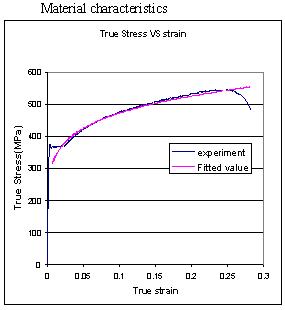Model-Based Simulation (MBS) has provided designers with flexible and cheaper means to explore design alternatives before physical part deployment. However, question of the confidence level on a particular model considering the full range of uncertainties in prediction and in physical tests has hampered wide applications, especially when dealing with real-life engineering problems. This collaborative research represents the joint efforts from two universities and General Motors for the development of a rigorous and practical approach for model validation (Model Validation via Uncertainty Propagation -- MVUP). The approach will utilize the knowledge of system variations along with computationally efficient uncertainty propagation techniques to provide a stochastic assessment of the validity of a modeling approach. Our proposed methodology will be demonstrated through validating the simulation models for sheet metal forming processes. The results of the research will lead to a model validation procedure that can provide a general-purpose stochastic assessment of model validity with the least amount of statistical assumptions and possibly one physical experiment. The research results developed will have an immediate impact on simulating springback in sheet metal forming process. The flanging experiments were performed on a 150-Ton Computer Controlled HPM Hydraulic Press in Northwestern University. The springback angle is measured by a Coordinate Measurement Machine (CMM) in the Metrology Laboratory. It is our expectation that it can be generalized to other engineering problems and will make a significant impact on how we view numerical simulations by considering all the physical and numerical uncertainties. The research results will also contribute to the development of new courses on model-based simulation, modeling and optimization of manufacturing processes, and uncertainty analysis in engineering design.
Model validation has become an increasingly important issue in the decision making process for model development as numerical simulations have demonstrated their benefits in reducing development time and cost. Frequently, the trustworthiness of models is inevitably questioned. To demonstrate the process of model validation for simulation-based models, a flanging process of sheet metal forming is used as an example. This process involves large deformation of sheet metals, contact between tooling and sheets, and process uncertainties, with the objective that is to predict the final geometry, or springback. The corresponding uncertainties in both material properties and process conditions are investigated and taken as input to uncertainty propagation, where metamodels are developed to effectively and efficiently compute the total uncertainty of the final configuration. Three model validation techniques are applied and examined to test the model validity for the sample flanging process. This work, naturally, involves both experimental and numerical analyses. It also demonstrates the need to develop a strategy in quantitatively characterizing the worthiness of the model when the response distribution is nonnormal.
Model validation was demonstrated through the sample flanging process. First, various types of uncertainties were analyzed. In this work, the variations inherited from previous manufacturing processes and physically occurred in the current physical tests were investigated. The sheet metals were assumed to follow the power law and correlations among its parameters (n, K and Y) were determined, which is an important key to the propagation of uncertainty analysis. The experimental data showed that n depends on the sheet orientation while K and Y were considered to be functions of n. Since the computational cost associated with FE simulations in uncertainty analysis had been concerned, metamodels were created for this purposeThen metamodels were successfully used in MCS to investigate the response uncertainties Model validation of springback prediction was implemented by using three approaches: (1) graphical comparison, (2) confidence interval approach and (3) r2 approach.
Sponsored by:
National Science Foundation.
References
Buranathiti, T., Cao, J., Chen, W., Baghdasaryan, L., Xia, Z.C., 2004, “Approaches for model validation: methodology and illustration on a sheet metal flanging process,” ASME Journal of Manufacturing Science and Engineering, 126, 4.
Chen, W., Baghdasaryan, L., Buranathiti, T., Cao, J., 2004, “Model validation via uncertainty propagation and data transformations,” AIAA Journal, 42, 7, 1406-1415.





